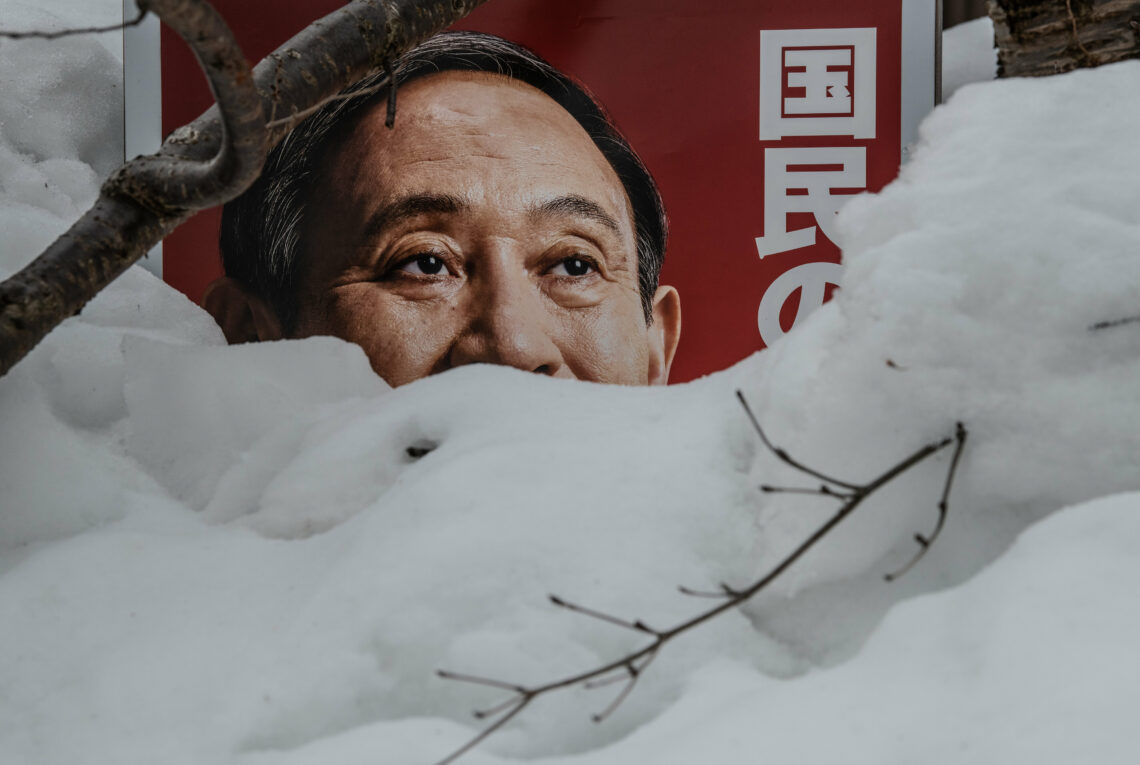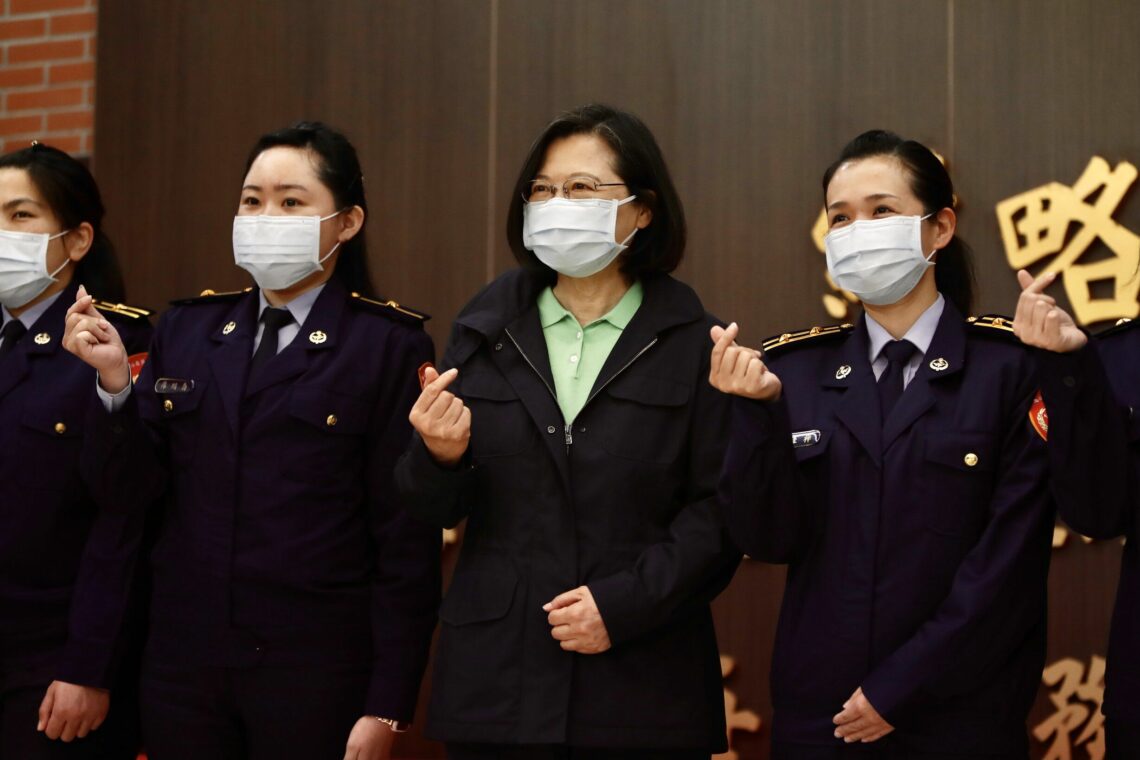Signs of stability in East Asia
Many expected the security situation in East Asia would be shaped by the special relationship between U.S. President Donald Trump and Japanese Prime Minister Shinzo Abe. However, with new leadership in both countries, an adaptation period will likely follow.

In a nutshell
- Security developments in East Asia will depend on U.S. foreign policy
- Tokyo wants more defense, but without angering Beijing
- Prime Minister Suga could seek closer ties with Seoul
This GIS 2021 Outlook series focuses on the opportunities that stem from the upheaval of the past year.
East Asia has been more successful than Europe and North America in containing the worst of the Covid-19 pandemic. Still, the region faces substantial uncertainties about the longer-term economic and social fallout of the crisis.
At the beginning of 2020, many thought United States President Donald Trump and the exceptionally long-tenured Japanese Prime Minister Shinzo Abe would stay in power for several more years. As the two had a largely frictionless relationship, prospects for U.S.-Japan partnership looked promising. But Prime Minister Abe surprised the country by resigning from office in September 2020 because of health issues. Two months later, Mr. Trump lost the presidential election.
End of an era
Typically, Japanese prime ministers do not stay in office for long. However, by the time of his resignation, Mr. Abe had been Japan’s head of state for almost eight years, the longest-serving prime minister in the country’s history. On September 14, Yoshihide Suga was chosen as leader of the ruling Liberal Democratic Party (LDP), to be elected prime minister two days later.
Like its main ally, the U.S., Japan began 2021 under new leadership.
The former prime minister was a long-time political insider. In 1993, he entered the House of Representatives. Twelve years later he was appointed chief cabinet secretary by then Prime Minister Junichiro Koizumi. In 2006, he took over as prime minister and president of the LDP. At the time, however, he only stayed one year in office and retired in 2007 because of chronic illness.
To everyone’s surprise, Mr. Abe came back to power. In 2012, he won a landslide victory in the general elections to the lower house of the Japanese Parliament. This return to power was followed by two similar triumphs in 2014 and 2017. At the time of his departure, nobody in the party could have successfully challenged him. It was expected that he would run for another parliamentary term in the general elections, due in 2021 at the latest.
The prime minister’s resignation marked the end of an era. Even his critics concede that Mr. Abe transformed Japanese politics.
New beginning
Like its main ally, the U.S., Japan began 2021 under new leadership. The choice of Mr. Suga as prime minister was a safe bet. He had been chief cabinet secretary for practically the whole term of Mr. Abe’s premiership, and he knows the ins and outs of the cabinet and the LDP.
However, at 72 years old, Mr. Suga will almost certainly not be leader for long. In fact, his age might have worked in his favor. Various faction leaders within the LDP are pursuing their own aspirations for high office. Already, some commentators compare Mr. Suga to Taro Aso, who was prime minister for just one year in 2008-2009.
But whatever the medium-term prospects, for the time being it is Prime Minister Suga who will have to deal with the challenges of the post-Trump era. Recalibrating relations between the U.S. and Japan will be a priority on both sides and an essential step to contain the most urgent geopolitical challenges in the Far East.
North Korea’s shadow
President Biden will face a much more challenging security situation in East Asia than what Mr. Trump had inherited from the Obama administration. The three most urgent issues are North Korea, the Senkaku islands and Taiwan.
It is most likely that nothing will be left of the special relationship between the former U.S. president and North Korean leader Kim Jong-un. There was never any substance to it – the North Koreans skillfully exploited Mr. Trump’s love of photo opportunities.
Tokyo will not want Pyongyang to fall off Washington’s radar.
Recently, Pyongyang has kept a low profile, which may also have to do with the country’s enormous economic difficulties. However, the North Korean regime remains an enigma. Even Beijing does not know what surprise North Korea may spring on the world next.
Tokyo will not want the rogue state to fall off Washington’s radar. Pyongyang could well be among the first to hurl an international crisis at the new Biden administration.
Japan will be on edge in the months ahead. It has no way of knowing what the Kim regime is up to, and whether it plans to lob rockets into Japanese air space or relaunch nuclear tests. And Tokyo is unsure how the new U.S. administration would react to such provocations.
Chinese threat
The whole situation is made more difficult by China’s provocations in the territorial waters and the air space of the Senkaku Islands in the East China Sea. Violations occur practically every day. Beijing is obviously intent on applying pressure, encouraged by hopes that the Biden administration might not stand by Japan if a conflict erupted over the disputed islands.
Now the main uncertainty weighing on East Asia is how Beijing and Washington will rearrange their relationship. This will also determine the course of the other major territorial issue in the region, Taiwan.
Taiwanese President Tsai Ing-wen has been making conciliatory statements of late. Chinese President Xi Jinping did not refer to Taiwan in his new year address, but in the past, he has threatened to use force against the island. For many observers, the hard-line Beijing has taken on Hong Kong’s autonomy bodes ill. In parallel, the Biden administration will likely seek to reduce built-up tension while staying firmly committed to human rights issues.

Biden reassures
During the last days of the Trump administration, China kept a low profile. It did not react to provocative statements by the president and Secretary of State Mike Pompeo. However, now that President Biden is settled in, we can expect a flurry of diplomatic activity, most of it between Washington and Beijing. However, multilateral meetings with American allies in Europe and the Far East will take place.
Security challenges in East Asia are improved by the prospect that Mr. Biden is a known quantity. Having served for eight years under President Obama and in the U.S Senate for over 35 years, he has the necessary preparation to deal with the major global powers. The White House will once again rely on traditional diplomacy.
All this is much to the liking of the Japanese government. When it comes to foreign relations and diplomacy, the Japanese establishment is extremely cautious and conservative. For Tokyo, Joe Biden is a relief.
Hopeful signs
Despite the “liberal” in its name, Japan’s LDP is a conservative party and has seen a shift to the right under Shinzo Abe’s leadership, in particular on security and foreign policy issues. Traditionally, LDP governments, like other conservative administrations around the world, have had a better rapport with Republican administrations than Democratic ones.
However, post-Trump, this may no longer be the case. With China’s continuous rise, there are more common geopolitical interests between Tokyo and Washington than ever before. While Prime Minister Abe had welcomed President Trump’s firm position toward Beijing, the Japanese were not at ease with the trade conflict.
One positive effect of the new leadership in Tokyo could be a reset of relations between South Korea and Japan.
Some events in early 2021 might point to increased stability in the Far East. While Mr. Trump was in the White House, the U.S.’s China policy clearly focused on containment and cooperation among democracies in the region, especially Japan, India and Australia. There is no reason to expect a drastic pivot. Washington may adopt a new tone, but a radical change in substance is unlikely.
The difference between Prime Minister Suga’s style of governance and that of his charismatic and flamboyant predecessor could not be greater. On the other hand, Washington would do well not to underestimate the experienced newcomer.
Scenarios
One positive effect of the leadership change in Tokyo could be a reset of relations between South Korea and Japan. While one could think that the two democracies would cooperate in the face of common threats, the truth is that tension had substantially risen under Prime Minister Abe. His nationalist grandstanding on the issue of war crimes committed during the Japanese occupation of Korea severely affected the ties between the two countries. While there are still many hardliners in the ranks of the LDP, Prime Minister Suga could smooth things over.
A rational assessment of mutual interests might motivate Prime Minister Suga and South Korean President Moon Jae-in to use the coming months for improving bilateral relations. But with Japan set to hold Lower House elections by October 2021 at the latest, and South Koreans choosing a new president by March 2022, the clock is ticking.








